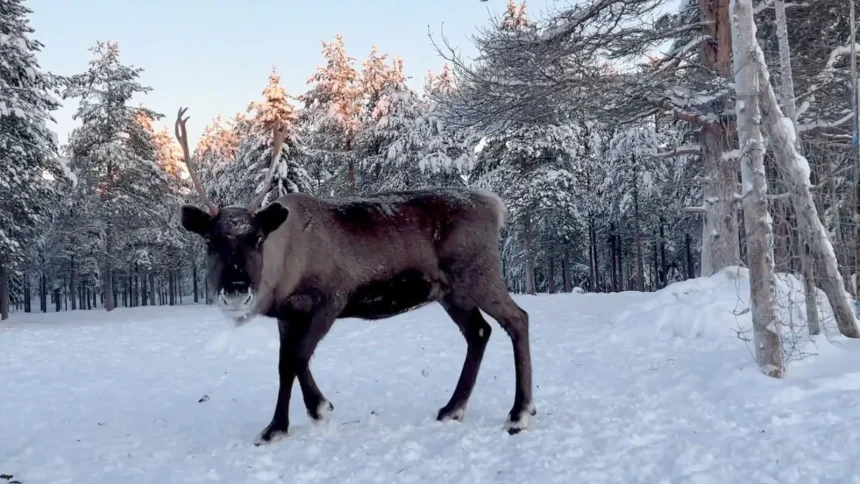It is almost lunchtime, and darkness has descended. Tiia Jeremejeff, a reindeer herder in northern Finland, jumps on a snowmobile to go and feed her family’s herd, who are kept in a large enclosure in the winter. It is -15C (5F) here in Kierinki, 110km (68 miles) north of the Arctic Circle, and her breath freezes almost instantly in the extreme cold. There is a thick cover of snow in the forest, some 20cm (7.9in) deep.
“It’s not easy being a reindeer herder,” says Jeremejeff, a woman of Sami descent whose livelihood and culture are tightly intertwined with reindeer herding. “It’s a harsh climate, and we have to go out and feed them no matter how cold it gets.”
Now, emerging evidence suggests reindeer may play a fundamental role in helping to preserve this entire ecosystem, including the snow cover, the open forest with its low-growing berry bushes, mosses, and lichen—an organism formed by a close association of fungi and algae—and even the cold winter climate. Research suggests that grazing reindeer may in fact help to fight some of the effects of climate change in the Arctic, which is warming four times faster than the rest of the planet. The growth of taller, woodier plants happens as an open landscape gradually transforms into a forest. Shrub and forest cover may generally sound desirable, but in the case of the Arctic landscape, it could erase an ancient ecosystem characterised by open forests, known as boreal forests, and the treeless Arctic tundra. Shrubification may also worsen the impact of climate change, as research suggests that shrubs trap heat that thaws the permafrost and warms up the tundra.







